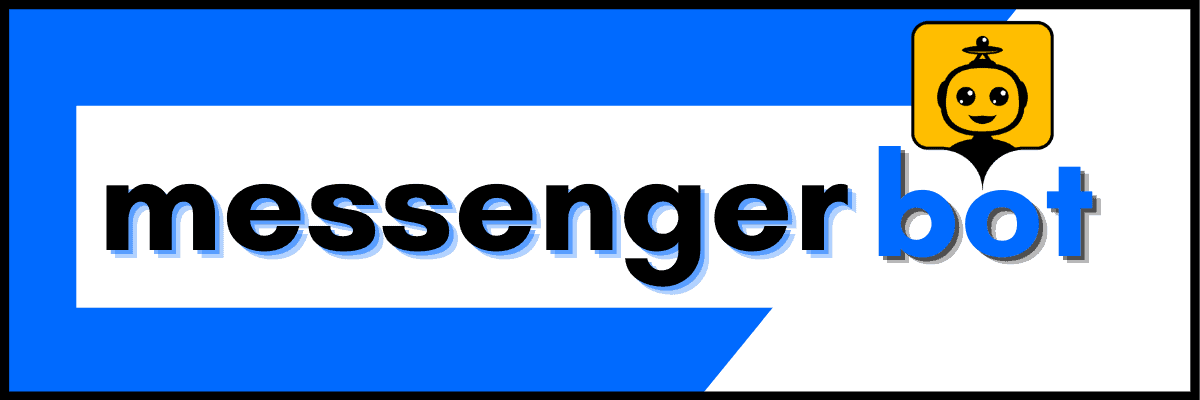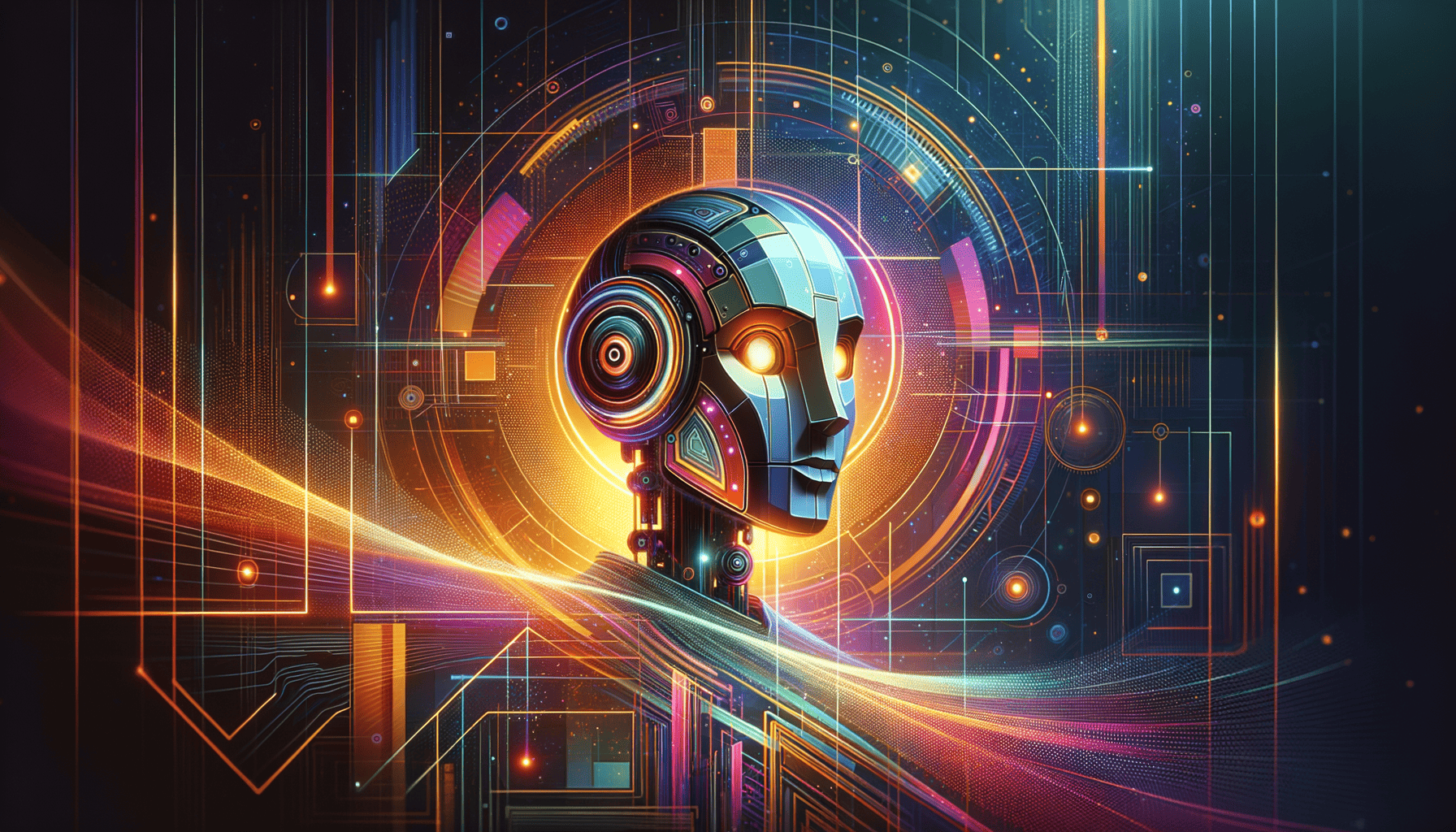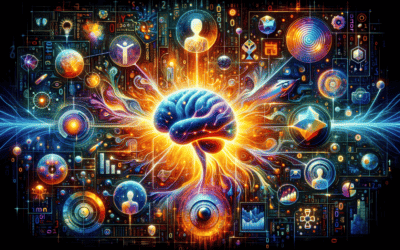In the era of digital transformation, businesses are constantly seeking innovative ways to enhance their customer service experience. As consumers demand faster and more convenient support channels, the rise of support chatbots has emerged as a game-changer. These AI-driven conversational interfaces are revolutionizing how companies interact with their customers, offering round-the-clock assistance, instant response times, and personalized support. From answering frequently asked questions to guiding users through complex processes, support chatbots are poised to become an indispensable tool in the customer service arsenal. This article delves into the world of support chatbots, exploring their capabilities, evaluating the best AI chatbot platforms, and providing insights on leveraging these cutting-edge solutions for seamless customer service.
What is a support chatbot?
A. Definition and purpose of support chatbots
A support chatbot is an artificial intelligence (AI)-powered virtual assistant designed to simulate human-like conversations and provide automated customer service. It utilizes natural language processing (NLP) and machine learning algorithms to understand user queries, interpret intent, and provide relevant responses. Support chatbots are deployed across various channels, including websites, mobile apps, messaging platforms, and social media, enabling 24/7 customer support.
They can handle a wide range of tasks, such as answering frequently asked questions, troubleshooting issues, providing product information, processing orders, and guiding users through self-service flows. By automating repetitive and straightforward inquiries, chatbots significantly reduce response times, improve operational efficiency, and enhance the overall customer experience.
Advanced chatbots leverage contextual awareness, sentiment analysis, and integration with backend systems to offer personalized and intelligent assistance. They can escalate complex issues to human agents, facilitating a seamless hybrid support model. Additionally, chatbots continuously learn from interactions, expanding their knowledge base and improving response accuracy over time.
B. Key features and capabilities of chatbots for customer service
Support chatbots are equipped with several key features and capabilities that enhance their effectiveness in delivering exceptional customer service:
- Natural Language Processing (NLP): NLP enables chatbots to understand and interpret human language, allowing for natural, conversational interactions.
- Intent Recognition: Chatbots can accurately identify the user’s intent behind their queries, ensuring appropriate and relevant responses.
- Contextual Understanding: Advanced chatbots can maintain context throughout conversations, providing coherent and personalized responses based on previous interactions.
- Multilingual Support: Many chatbots, like Brain Pod AI, offer multilingual capabilities, enabling seamless communication with customers across different languages and regions.
- Knowledge Base Integration: Chatbots can be integrated with knowledge bases, product catalogs, and other data sources, allowing them to provide accurate and up-to-date information.
- Sentiment Analysis: By analyzing the sentiment behind user messages, chatbots can detect frustration or dissatisfaction and adjust their responses accordingly.
- Omnichannel Deployment: Chatbots can be deployed across multiple channels, such as websites, mobile apps, messaging platforms, and social media, ensuring a consistent and seamless customer experience.
According to a report by Gartner, “By 2022, 70% of white-collar workers will interact with conversational platforms daily” (Gartner, 2019). Furthermore, a study by IBM found that businesses can reduce customer service costs by up to 30% by implementing conversational AI solutions like chatbots (IBM, 2020).

What is the best AI chatbot for customer support?
A. Evaluating top AI chatbot platforms for support
As businesses strive to provide exceptional customer service, leveraging advanced AI chatbots has become a game-changer. These intelligent virtual assistants, powered by natural language processing (NLP) and machine learning, can comprehend and respond to customer queries with remarkable accuracy, offering a seamless and personalized support experience.
One of the leading AI chatbot platforms for customer support is Salesforce Einstein Bot. Tightly integrated with the Salesforce CRM, this solution harnesses NLP to understand customer intent, sentiment, and context. It offers multi-language support, sentiment analysis, and omnichannel deployment capabilities, ensuring a consistent experience across various touchpoints.
Another prominent player in the AI chatbot space is Amazon Lex, a conversational AI service from Amazon Web Services (AWS). Leveraging deep learning for natural language understanding, Amazon Lex can be seamlessly integrated into websites, mobile apps, and messaging platforms, providing a unified support experience.
IBM Watson Assistant is another powerful AI chatbot solution, built on IBM’s renowned Watson AI platform. It offers advanced NLP capabilities, dialog management tools, and the ability to integrate with other Watson services like Tone Analyzer and Speech-to-Text, enabling multi-modal interactions.
Google Dialogflow, Google’s conversational AI platform, utilizes machine learning to understand context and user intent, delivering highly relevant and natural responses. It supports multiple languages, integrates with various channels, and provides valuable analytics to optimize the chatbot’s performance.
Microsoft’s Bot Framework is an open-source bot development platform that offers NLP capabilities, dialog management tools, and integration with Azure Cognitive Services like Language Understanding and Speech Recognition, enabling developers to create intelligent chatbots tailored to their specific needs.
B. Factors to consider when choosing a customer service chatbot
When evaluating AI chatbot platforms for customer support, businesses should consider several key factors:
- Integration Requirements: Assess the chatbot’s ability to seamlessly integrate with existing systems and channels, such as CRM platforms, websites, mobile apps, and messaging platforms.
- Language Support: Determine if the chatbot can handle multiple languages to cater to a global customer base.
- Industry-Specific Use Cases: Explore if the chatbot platform offers pre-built solutions or templates tailored to specific industries or business domains.
- Scalability and Performance: Evaluate the chatbot’s ability to handle high volumes of inquiries without compromising response times or accuracy.
- Analytics and Insights: Look for chatbot platforms that provide comprehensive analytics and insights into customer interactions, enabling continuous optimization and improvement.
- Customization and Extensibility: Consider the platform’s flexibility in allowing customizations, integrations with third-party services, and the ability to extend functionality as needed.
By carefully evaluating these factors and understanding their specific requirements, businesses can select the AI chatbot platform that best aligns with their customer support needs, ensuring a seamless and intelligent customer experience.
III. Can I use ChatGPT for Free?
A. Understanding ChatGPT’s Pricing and Free Trial Options
Yes, you can use ChatGPT for free to a certain extent. Developed by OpenAI, ChatGPT offers a free tier that allows users to access its advanced language model and AI capabilities without any subscription fees. To get started with the free version, simply navigate to chat.openai.com in your web browser or download the ChatGPT app for Android or iOS. Click “Get Started” and follow the prompts to create a free account with your email address or sign in with an existing account.
Once logged in, you can start chatting with ChatGPT and leveraging its AI language model for a wide range of tasks, such as writing, coding, analysis, and creative projects, without any charges. However, it’s important to note that the free version of ChatGPT has certain limitations, including slower response times during periods of high demand, restricted access to the latest model updates, and potential data usage constraints. Additionally, some advanced features like browsing the internet or code execution may be limited or unavailable in the free tier.
For users who require unrestricted access to the full range of ChatGPT’s capabilities, faster response times, and priority access to new features and model updates, OpenAI offers a paid subscription plan called ChatGPT Plus. The subscription pricing and benefits may vary over time, so it’s recommended to check OpenAI’s website for the latest information.
B. Exploring Free Alternatives to ChatGPT for Customer Support
While ChatGPT offers a free tier, there are also other free alternatives available for businesses seeking AI-powered customer support solutions. For example, Brain Pod AI provides a multilingual AI chat assistant that can be integrated into various platforms, including websites, messaging apps, and social media channels. This AI assistant can handle customer inquiries, provide personalized recommendations, and even assist with tasks like scheduling appointments or processing orders.
Another notable free alternative is Drift, which offers a chatbot builder that allows businesses to create and deploy AI-powered chatbots for customer support without any coding required. These chatbots can be customized to handle frequently asked questions, qualify leads, and provide personalized assistance to customers.
It’s worth exploring these and other free options to determine the best fit for your business’s specific needs and budget constraints. Many of these alternatives offer free trials or limited free plans, allowing you to test and evaluate their features before committing to a paid subscription or upgrading to a more comprehensive solution.
IV. How do I cancel my chatbot subscription?
A. Cancellation policies of popular chatbot providers
As the demand for support chatbots continues to rise, various providers have emerged in the market, each with their own cancellation policies. It’s essential to review the terms and conditions carefully before subscribing to a customer service chatbot to understand the cancellation process and any associated fees or penalties.
Some popular chatbot providers like Brain Pod AI offer flexible subscription plans with straightforward cancellation options, allowing users to cancel at any time without incurring additional charges. Others may have specific notice periods or early termination fees, so it’s crucial to familiarize yourself with these details before committing to a long-term subscription.
B. Steps to cancel a support chatbot subscription
To cancel your chatbot subscription, follow these steps:
- Access your chatbot platform’s account settings or dashboard.
- Locate the “Subscriptions” or “Billing” section.
- Find the specific subscription plan you wish to cancel.
- Click on the “Cancel Subscription” or “Unsubscribe” button/link.
- Confirm the cancellation when prompted.
- Some platforms may offer options to pause or downgrade the subscription instead of full cancellation.
- Check for any prorated refunds or credits based on the platform’s policies.
- Ensure you receive a confirmation email or notification about the successful cancellation.
It’s crucial to review the platform’s terms of service and cancellation policies, as some may have specific instructions, notice periods, or penalties for early termination. Additionally, back up any data or conversations before cancelling to avoid potential data loss. If facing issues, contact the chatbot provider’s customer support for assistance with the cancellation process.

V. Is chatbot good or bad?
A. Pros and cons of using chatbots for customer service
Chatbots offer both advantages and disadvantages for businesses seeking to enhance their customer service experience. On the positive side, chatbots powered by artificial intelligence can provide 24/7 availability, instant responses, cost-efficiency, and consistent service. They can handle multiple conversations simultaneously, making them suitable for high-volume interactions. Additionally, chatbots can collect valuable customer data and insights for analysis and improvement.
However, chatbots also have limitations that should be considered. They may struggle to understand and respond to emotional or complex queries, lacking the empathy and nuance of human interactions. Chatbots can fail to comprehend ambiguous or open-ended questions, leading to unsatisfactory or incorrect responses. There are also potential security and privacy concerns if chatbots are not properly secured, as well as the need for significant resources and ongoing optimization for training and maintenance.
To maximize the benefits and mitigate the drawbacks, businesses should carefully assess their specific needs and customer expectations. AI chatbots from providers like Brain Pod AI can excel at handling routine tasks, providing basic information, and streamlining simple interactions. However, for complex or sensitive inquiries, human agents may be more appropriate. A balanced approach, combining chatbots and human agents, can often provide the best customer experience.
B. Best practices for effective chatbot implementation
To ensure a successful chatbot implementation for customer service, businesses should follow best practices such as:
- Clearly defining the chatbot’s scope and limitations to manage customer expectations.
- Continuously training and updating the chatbot’s knowledge base to improve its understanding and responses.
- Integrating seamless handoff to human agents for complex or escalated issues.
- Prioritizing data security and privacy measures to protect customer information.
- Monitoring chatbot performance and gathering user feedback for ongoing optimization.
- Maintaining a human-like, conversational tone and personality to enhance the user experience.
- Offering multilingual support to cater to a diverse customer base.
By following these best practices and leveraging the strengths of both chatbots and human agents, businesses can provide efficient, personalized, and satisfactory customer service experiences that meet the evolving needs of modern consumers.
VI. What is the difference between chatbot and chat support?
A. Chatbots vs. live chat agents: Key distinctions
While both chatbots and live chat agents aim to provide customer support, there are key differences in their underlying technologies and capabilities. A support chatbot is an automated conversational interface powered by artificial intelligence (AI) and natural language processing (NLP) technologies. It simulates human-like interactions by understanding and responding to user inputs through text or voice. Chatbots operate based on predefined rules, scripts, and machine learning algorithms to provide automated responses.
In contrast, chat support, also known as live chat, involves real-time communication between a human agent and a customer. Human agents handle inquiries, provide personalized assistance, and offer a more nuanced understanding of complex or sensitive issues. Chatbots excel at handling high volumes of routine queries efficiently, ensuring 24/7 availability, and reducing wait times. However, they may struggle with ambiguous or context-dependent queries. Chat support offers a more personalized touch, better comprehension of nuances, and the ability to handle intricate scenarios, but can be more resource-intensive and subject to availability constraints.
The choice between chatbots and chat support depends on factors such as the nature of the business, the complexity of inquiries, and the desired balance between efficiency and personalized service. Many companies adopt a hybrid approach, utilizing chatbots for initial triage and simple queries, while escalating complex cases to human agents for personalized attention.
B. Integrating chatbots and human agents for optimal support
The most effective customer support strategies often involve a seamless integration of chatbots and human agents. This approach leverages the strengths of both technologies to deliver efficient, personalized, and scalable support experiences. By deploying chatbots as the first line of support, routine queries can be handled instantly, freeing up human agents to focus on more complex issues that require empathy, context, and human judgment.
Furthermore, chatbots can seamlessly escalate interactions to human agents when needed, providing a smooth transition and ensuring continuity in the support experience. This integrated approach not only optimizes resource allocation but also enhances customer satisfaction by delivering the right level of support at the right time, leveraging the unique strengths of both AI and human agents.
As conversational AI continues to evolve, the lines between chatbots and human agents may blur further, with AI-powered agents becoming increasingly capable of handling more complex and nuanced interactions. However, the human touch will likely remain invaluable for scenarios requiring emotional intelligence, empathy, and critical thinking, underscoring the importance of a harmonious integration between AI and human support.
VII. Conclusion
A. Future of support chatbots and AI in customer service
The future of support chatbots and AI in customer service is incredibly promising. As AI technology continues to advance, chatbots will become even more sophisticated, capable of understanding complex queries and providing personalized, human-like responses. This will further enhance the customer experience and streamline support operations.
One exciting development is the integration of multilingual AI chat assistants like those offered by Brain Pod AI. These chatbots can communicate in multiple languages, breaking down language barriers and enabling businesses to provide seamless support to a global customer base. This opens up new opportunities for companies to expand their reach and offer superior service to diverse audiences.
Additionally, the rise of conversational AI and natural language processing (NLP) will make chatbot interactions even more human-like and intuitive. Customers will be able to converse with chatbots as they would with a human agent, fostering a more engaging and personalized experience.
B. Final thoughts on leveraging chatbots for seamless support
As we embrace the future of customer service, it’s clear that support chatbots and conversational AI will play a pivotal role. By leveraging these powerful tools, businesses can provide round-the-clock assistance, reduce response times, and enhance customer satisfaction.
However, it’s crucial to strike the right balance between automation and human touch. While chatbots can handle routine inquiries efficiently, more complex or sensitive issues may still require human intervention. A seamless integration of AI-powered chatbots and human agents can create a hybrid support system that delivers the best of both worlds.
As a leading provider of support chatbot solutions, we at Messenger Bot are committed to staying at the forefront of this exciting technological revolution. We continuously invest in research and development to ensure our chatbots remain cutting-edge, offering our clients the most advanced and effective tools for exceptional customer service.
By embracing the power of AI chatbots and conversational AI, businesses can unlock new levels of efficiency, personalization, and customer satisfaction. The future of support is here, and those who embrace it will undoubtedly gain a competitive edge in today’s fast-paced, customer-centric landscape.




